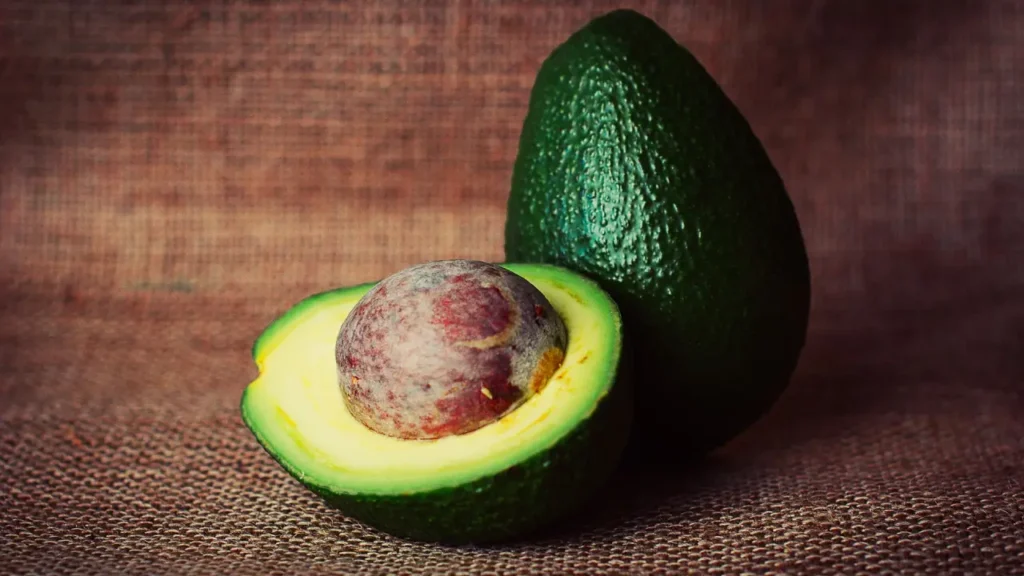Picture yourself taking a drink of a tropical delight, taking in the sun and the taste of homegrown pineapple. To cultivate your own pineapple plant may sound suppletin, but it is really an adventure. It is about taking responsibility of a living creature and cultivating it into a bearing plant. Yes, it does require a time — up to 15 months and even more — but each effort is not in vain. Here, you will learn everything for how to grow pineapple to how to care for a pineapple plant.
Key Takeaways
- Growing pineapples at home takes patience, with fruit typically maturing in 15 months or more.
- Pineapple plants thrive in warm temperatures ranging from 65°F to 85°F (18°C to 30°C).
- Full sun or bright indirect light is essential for pineapple plants, needing at least six to eight hours daily.
- Fertilize your pineapple plant every 8 weeks for optimal growth and health.
- Pineapple plants can produce fruit from their crowns, slips, or suckers, making them versatile for home gardeners.
- Harvesting will occur about 4 to 6 months after the fruit begins to develop.
- Only one pineapple grows per plant at a time, but they can produce multiple fruits over their lifespan through ratoons.
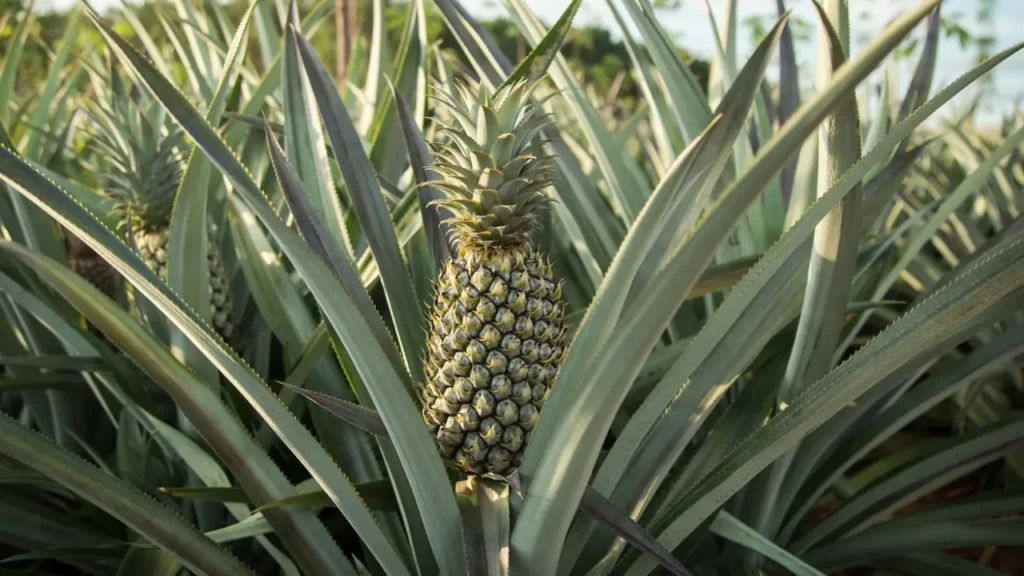
Table of Contents
The Basics of Pineapple Cultivation
It requires a good understanding of some particular requirements and any behavior in growing pineapples. These are from the Bromeliaceae family and as you would expect like warm, humid conditions of the tropics. Therefore, there is the need to select the appropriate methods of increasing the yield of pineapples. Picking the right technique from where to start such as using the pineapple top or slips has a very big impact in achieving success.
Ideally the temperatures that are most suitable for pineapples are between 22-32 degrees Celsius. Unlike other countries where most of the pineapples are processed, in places such as India, most of the pineapples are consumed raw. This is in contrast to other big producers where majority are processed. It is advisable that one should be in a position to understand the climate, the kind of soil that is appropriate to be used in the growing of the pineapples and even the type of watering which should be provided to them.
Pineapple plants are usually planted densely to maximize on the fruit yield; delivering 70-105 tons per hectare. The major factors include the following; First, the proper control of weeds and the use of mulch and appropriate nutrients also go a long way in maintaining the health of the soil. Other mentionable facts include the fact that applying growth regulators can help to increase the size and quality of the fruit. That is why growers must discover the best way on how to grow pineapples efficiently.
Understanding the Pineapple Plant
The pineapple plant scientifically called Ananas comosus has some unique features as discussed below. The plant belongs to the Bromeliaceae family which comprises of many one of a kind species. It is grown mostly in tropical regions, hence resulting to different varieties of pineapples each with different characteristics.
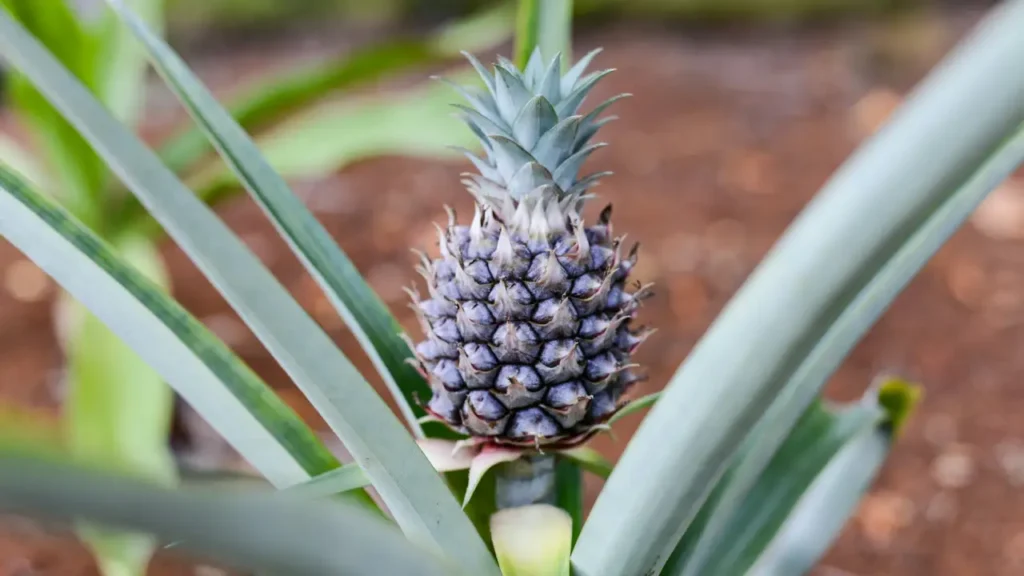
Botanical Classification
The pineapple is in the family Bromeliaceae that has over three thousand species. The main type of Ananas comosus cultivated for edible purpose is Pineapple. It is therefore important to understand various varieties of pineapple plant since they could be of different size, taste, and maturity rate. Some among them grow faster and develop suckers quicker and thus assist the gardeners in getting the produce faster.
Physical Characteristics
Pineapple shaped characteristics of the pineapple plant. It could reach a height of five feet and width of about six feet in diameter. Its leaves are elongated and pointed in structure that emerges from the center of the plant in circles called rosette. Small fruits which aggregate together in the form of an inflorescence are what we eat as pineapple. These plants are easy to grow, require less attention, and bear fruits that are good for consumption at home.
How to Grow Pineapple from a Pineapple Top
Planting pineapple from the top can be considered relaxing and quite fulfilling at the same time. First of all chop off the pineapple crown but leave approximately one inch of the stem on it. This stem is important to the further development of the roots. Subsequently, you should trim off any excess fruit pulp, in order not to rot the cut as well as allow the skin to dry for several days.
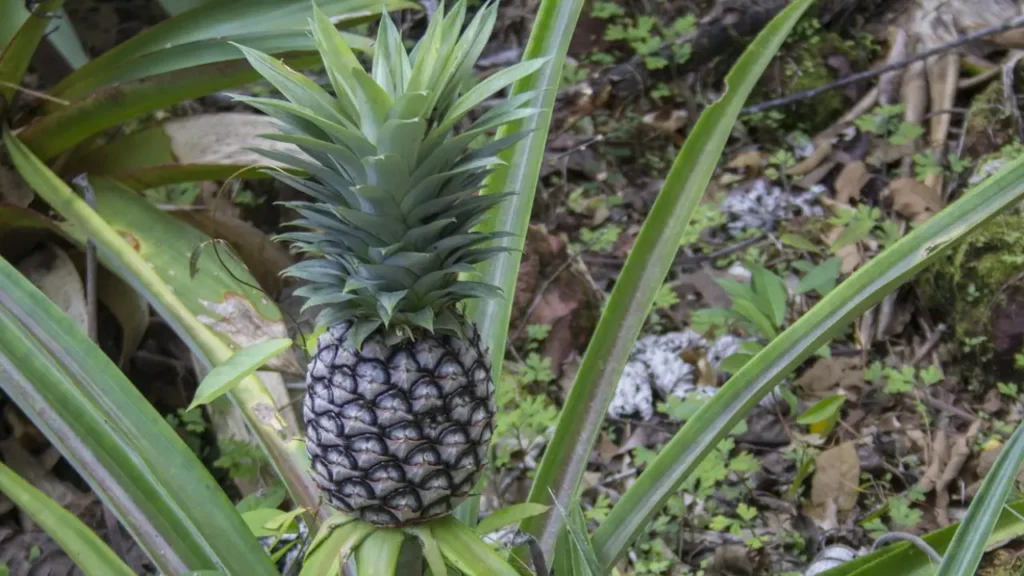
Succulent planting of pineapple tops is more effective herein when done in soil rather than water. A good potting mix to use is a soil mix which has good drainage qualities for planting. Roots should appear after six to eight weeks only the growth of the plant might at this time. General care: Pineapple requires a minimum of six hours of direct sunlight per day.
- Water your pineapple plant as often as you can but let the soil dry up before the next watering session.
- To ensure a healthy growth of the plant, use a water soluble house plant fertilizer which should be applied once or twice monthly all through spring and summer.
- For better growth of pineapple plant, it is advised to take it outside your home during late spring and summer if the weather is favorable and place the plant where it will receive partial shade.
Depending on how well you have taken care of your plant, it may be ready to bear flowers in the second or third year of its growth. To encourage its growth you should place the plant on this side or put it in a plastic bag with an apple inside. This exposes it to ethylene gas thus blossoming in two to three months depending on the type.
Learning how to grow pineapple is not easy especially because these plants grow very slowly. If the conditions and care are put in place the result is worth the effort. It is fun to watch your pineapple top develop and grow healthy!
Pineapple Planting Guide
Raising pineapples from the container can be very enjoyable. It is a guide to teach you on how to cultivate pineapple plants and get a good harvest of pineapples. Basically just select the right pineapple for the preparation which we are going to describe step by step.
Choosing the Right Pineapple
When choosing a pineapple one should choose the ripe and fresh one. Choose the pineapples in which the leaves are fresh green and the bottom portion of the pineapple show yellow. What this implies is that it is now prepared for plant.
Preparing the Pineapple Crown
In preparation begin by removing the upper portion of the fruit with a lot of leaves. Trim at the current year’s growth at least 1 inch below the foliage. After that place the crown on a clean plate with the stem a side and let it dry in a cool shaded area for 2-3 days. This allow it to develop deep root system and avoid becoming a root rot vegetable.
Planting Process
You will be planting in a 6 to 8 inches pot which should have a drainage hole. Plant it on sandy or loamy soil with a PH of 4.5 to 6.5. Place the pineapple crown in the pot then fill up the empty space it with the soil.
Place the pot to an area where it receives light, preferably sunlight or artificial for about 6 hours. This has a central role in growth because? Make sure that the soil receives little water frequently so as to avoid making the soil too wet. These guidelines will help you in the pineapple picking process.
Choosing the Best Soil for Growing Pineapples
Selecting the right type of soil is very important for growth of the pineapples. It prefers a type of soil that is sandy or with a loam content and has good ability in water drainage. Preparing of the soil for pineapple improves the health of the plant and also the quality of the fruits produced.
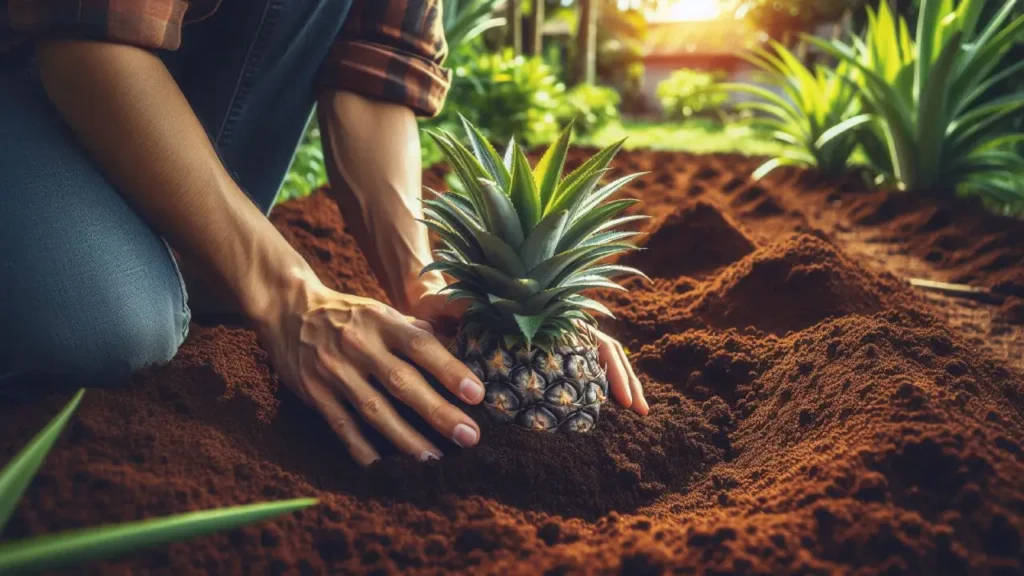
Soil Type
The most suitable soil content should be; 50% sand, 25% compost or manure and the rest 25% perlite or vermiculite. This combination aids in the aeration and drainage of the soil and going by the same it reduces root rot.
pH Levels
To grow pineapples, it is significant to know the pH of the soil. They are best grown in a pH of 4.5 to 6.5. It determines whether there is need for change in the pH of the soil through taking a test on it. This provides nutrients to the plants and helps to have strong root system and growth of plants.
Ideal Conditions for Growing Pineapples
Before cultivating pineapples the following factors on sunlight and water have to be understood. These are important to them and their fruit yield. By knowing these needs you will be in a good position to enable your pineapples to grow and also produce a lot of fruits.
Sunlight Requirements
Pineapples love bright sunlight. They require approximately 6 – 8 hours of filtered light on any given day. This light strengthens their leaves particularly those needed to absorb nutritious nutrients.
However, they must be grown on an area which receives full sunlight, although they can also tolerate partial shade. However, too little direct sunlight will not prevent them from setting fruits or remain healthy for that matter.
Watering Needs
It possible to state that it is vital to learn how this type of plants is being watered. It favors sandy soils because they do not hold much water; the plants also do not require frequent watering. Similarly, having too much water will produce root rot and this is not good for the plant at all.
Thus, let the soil be moderately wet but not waterlogged or swimming in water, in other words, ‘moist. ’ The amount of water you should give should be determined by the season as well as the growth rate of the plant. This will assist you to make progress in growing pineapples.
| Condition | Ideal Requirement |
|---|---|
| Sunlight | 6-8 hours of indirect light daily |
| Soil Moisture | Slightly moist, well-draining |
| Soil pH | 4.5 – 6.5 (slightly acidic) |
| Growth Temperature | 68°F to 86°F (20°C – 30°C) |
| Frost Tolerance | Not tolerant below 28°F (-2°C) |
Pineapple Care Tips
Taking care of pineapple plant entails paying these plants much attention as well as adhering to certain measures. Doing so helps to keep them healthy and productive. Here proper care tips helps to increase the growth of plant as well as a fruit yield of plant.
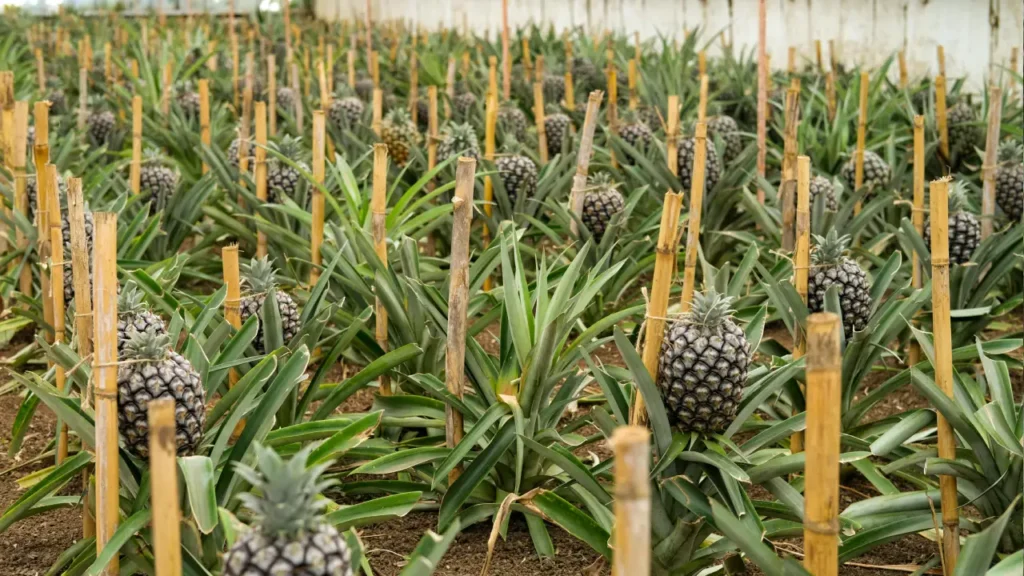
Fertilization Schedule
Ideally, take a routine when applying the fertilizer so that the plant reaps the benefits most of the time. Fertilize your pineapple plants every 4 to 8 week The fertilizer should be well mixed to provide nutrients to the plant. A good fertilizer is one that is a natural slow-release product with nitrogen, phosphorous, and potash.
Feeding frequency is, therefore, shortened during the spring and summer months If your perennials are growing during these seasons, feed them once a week. It aids in the development of the leaves and prepares the plant for the flowers.
Pest Management
Therefore, control of pests in pineapples is very crucial in improving the health of the fruits. Some categories of pests such as mealybugs and aphids can negatively affect your plant if not well contained. So, it is always insightful to monitor your pineapple plant frequently so as to note signs of pests.
Small scale pests can be managed in a natural way using soapy water. For the bigger problems, it is recommended that one employs organic insecticide that is specifically formulated to treat bromeliads.
Pineapple Plant Maintenance
If you are to have many fruits, the best thing you need to do is to ensure your pineapple plants are healthy. This is how and when to frequency and repot them in their different seasons to make gardening an enjoyable event. It also helps your plants to remain healthy and energetic all the time.
Repotting Guidelines
Different from other plant species, pineapple plants need larger pots with as the pineapple grows in size. You should transplant them to a new pot every one to two years. Select a pot slightly larger and ensure it has drainage holes that will allow water to drip through thus not making the soil soggy.
When transplanting, use orchid compost mixed with peat-free multi-purpose compost. This assist your plant to grow well. Repotting also helps to change the soil, which is good for your plant since it brings in nutrients that your plant requires.
Seasonal Adjustments
And due to changes in seasons, there are certain measures or practices that one can have to undertake while growing pineapple plants. During the warmer months, water the plants on regular basis if the soil part of the pot feels dry. That assists to build up their strength.
Water less and avoid freezing especially if the plants you own are indoors during the cold months. Feed them according to the season by increasing or decreasing the number of feedings. Give more when they are active like during spring and summer and less when they are less so like during winter. In this way, your pineapple plants will grow well in the entire year without having to worry about the unfavorable weather conditions.
How to Care for a Pineapple Plant
In order for pineapple plant to grow and remain healthy you have to ensure the environmental and nutritional requirements are met. This is on light, water, and proper temperature you should ensure the plant gets enough of it. This will assist it to mature and produce fruits hence enabling it to reduce incidences of diseases.
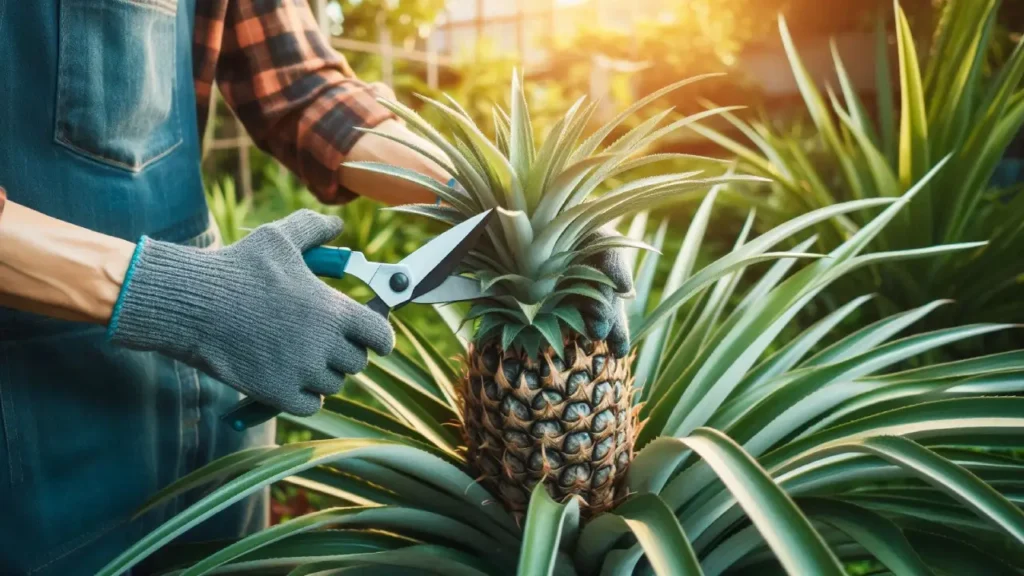
- Sunlight: It has been discovered that your pineapple plant must be exposed to at least 6 hours of bright, indirect sunlight daily. For the purpose of optimum fruiting put it in or near a southern window with good amounts of light.
- Watering: Water the soil directly and this should be done with frequency but not flooding it with water. Water the plant when the soil feels dry on top, this should done once in a while, maybe once in a week.
- Temperature: Favorable conditions for growth are within the range of 65°F to 95°F or in other words 18°C to 35°C. Maintain temperature so that your plant to do well for you.
- Fertilization: A recommendable fertilizer to add to the pineapple plant is a general indoor plant fertilizer namely, and this should be added to the pineapple plant after every two weeks. As soon as it begins to bloom, feed this plant a 10-10-10 NPK fertilized with magnesium weekly.
Other factors that need to be considered include size of the pot to be used. It is good to use a 6- to 8-inch pot to provide enough space for the roots of the plant to develop properly. The roots may take up to two months to become so strong and that is when the plant will start doing well.
| Care Aspect | Recommendation |
|---|---|
| Sunlight | At least 6 hours of bright, indirect sunlight |
| Watering | Once a week when soil is dry |
| Temperature | 65°F – 95°F (18°C – 35°C) |
| Pot Size | 6- to 8-inch pot |
| Fertilization Frequency | Twice a month; bi-weekly during flowering |
Just make sure to know that the pineapple fruits may take up to three years in developing inside the container. Some plants may take a longer time to grow and show signs of growth, water and get rid of pests of pests as required. The waiting period will be deserved especially when you are savoring your fresh pineapple.
Step-by-Step Pineapple Growth Timeline
In fact, it will be beneficial to learn about the cultivation timeline for pineapples so that it can assist your growing process. These are as follows: There are several significant pineapple growth stages.
First, pineapple plant requires 18-24 months of time to flower after planting have been made. Then it takes another 1 to 3 months for the fruit to develop depending with the kind and the conditions prevailing at that time.
Once the fruit starts growing it takes about 5 months to mature to the level it is ready to be picked and eaten. This is when it has a yellow or an orange skin which is an indication that it is ready to be consumed. The most appropriate temperature for growing the plant is through a range of 60 °F (15 °C) and 95 °F (35 °C). This temperature range is good so that the fruit will grow to optimum standard.
Pineapple plant generally produces one fruit per cycle in a pineapple plant. Ideal yield is generally produced in the second or the third year of planting. By following all the guidelines of plant management, it can continuously produce for 5 to 7 years. Subsequently when the fruit is harvested new shoots known as suckers emerge from the plant. These can therefore be used to manufacture more plants and ensure that there is continuity in production.
The following table shows a detailed timeline of step-by-step pineapple growth:
| Growth Stage | Timeframe | Details |
|---|---|---|
| Planting | 0 months | Pineapple crown or offshoots are planted in well-draining soil. |
| Growth to Flowering | 18-24 months | Time taken to reach flowering stage. Environmental factors critical. |
| Flowering | At 24 months | Flower development occurs, followed by emergence of fruit. |
| Fruit Formation | 1-3 months | Fruit begins to develop post-flowering; conditions influence speed. |
| Fruit Ripening | 5 months | Fruit matures, reaching peak sweetness just prior to harvest. |
The Pineapple maturity Cycle indicates just how important it is to understand each stage in order to grow pineapples to their maximum potential. Some of the most crucial conditions to monitor include; It is very essential to monitor conditions especially during these stages.
How to Harvest Pineapple
There is a lot of caution that must be taken when having to harvest pineapples. This means that one needs to know when the fruit is ripe not such a simple thing to note. Whenever these signs appear, then you know it is time to pick. This in a way serves to help those who use it get the best esthetics and quality.

Signs of Ripe Pineapples
Check for these signs to know if your pineapple is ripe:
- The fruit should ripe at least in one third to two third of the yellow-orange color.
- It should have a sweet smell, which means it’s ready.
- Press on it in a firm hand and if the leaves pull off easily, then it is ripe.
- Fully ripe pineapples are very hard but if pressed with the fingers it yields slightly.
Harvesting Techniques
After checking for ripeness, here’s how to harvest:
- It is preferred to use a sharp knife in order to remove the fruit from the stalk without causing a lot of bruising.
- Leave any potential shoots on the plant for more growth and future harvests.
- Pineapples should be handled carefully especially with fingers so that they do not experience an impact which results in discoloration and short lifespan of the pineapple.
This fruit does not continue to ripen once it has been plucked from the plant. If you want you pineapple to remain fresh for a few more days you should take good care of it. Recommended for use, store in cool dry area or in the refrigerator for optimal quality.
Challenges in Growing Pineapples at Home
Some but not all fruits can be grown at home and it is especially hard to grow pineapples. It is crucial to keep in mind the possible problems that can be encountered. There are many constraints to pineapple production such as diseases which may affect plants and the environment within which growth is expected to take place.
Common Plant Diseases
A major issue that farmers encounter in the rearing of the pineapples is handling diseases. One of the major diseases is the root rot which is brought by poor drainage system and too much water. Other diseases include
- Fungal infections
- Bacterial wilt
These diseases are normally detrimental to the plant and consequently minimize the yield of fruits. To eradicate these problems, choose soil with good drainage and also make water it properly.
Environmental Threats
Pineapple plants are sensitive to numerous environmental factors hence exposes them to many dangers. Fluctuations in temperature are also a big issue because pineapple fruits will only grow in a specific temperature range. Harmful effects of cold weather include stunted growth or even dormancy of a plant. Lack of light also affects the process of photosynthesis thereby reducing yields on the plants. Pineapples require 6-8 hours of the sun to be able to grow and develop properly.
To combat these problems, it is advisable to take the plants and place them at areas that are exposed to more sunlight. This can assist to help they grow better.
Conclusion
Pineapple growing at home is really a sweet journey which is full of tasty fruit. It can be propagated by using a cutting or through the seeds although the plant does not bear seeds. Hence, it is crucial to understand everything that should be done to grow pineapples in order to achieve success.
Pineapple tops that are placed in water before planting bears fruits faster than the ones that are directly planted in the soil. It takes one week to get roots in this case a process that is faster than planting directly on the soil.
Basically, from cutting to fruiting of a pineapple plant could take up to two years. Although it requires time and proper time management it is the best way to go through. It also needs a warm spot and for it to feed well you should use balanced fertilizer on the pineapple every 6-8 weeks.
Fresh fruits obtained from our gardens are always preferable to refrigerated fruits bought from stores. But once you get the right techniques and focus to this, you will enjoy the day you get to harvest your homegrown pineapples. Rearing pineapples in your compound improves the variety and beauty of your garden as well as enhances the variety of food ingredients.
Read Also : How to Grow Grapes
FAQ : How to Grow Pineapple at Home
How long does it take to grow a pineapple?
The process of growing a pineapple takes 15 to 28 months of time. This time may differ depending on the condition and level of care that is given.
Can I grow a pineapple from the top?
Oh yes, it is very much possible to grow a pineapple from the top or from the crown. First, cut the top, dry this top for several days. Then, plant it in a soil that has good drainage abilities.
What is the best soil for growing pineapples?
Pineapples grow well in soil that has excellent filtrate characteristics especially sandy or loam soils. Its best grown in soil that has a pH of between 4.5 and 6.5.
How often should I water my pineapple plant?
Watering your pineapple plant, water it often but do not make the soil too wet. Water the plant in a different way as it grows or during a different seasons of the year.
How do I fertilize my pineapple plant?
Fertilize your pineapple plant with an organic based fertilizer of N-P-K, 10-10-10 to be precise, every 4 to 8 weeks. This assists it to grow Healthy.
What are some common pests to watch out for?
The mealybugs are some of the pests that usually affect the pineapple plants. Take care of your plant and control pests using methods such as the use of natural pesticides.
When is the right time to harvest a pineapple?
Pick pineapples when the lower third of the fruit is yellowish and has a fruity fragrance. This means it’s ripe.
Do pineapple plants need direct sunlight?
Yes, they do as they prefer to get drenched in bright sunlight. Ideally, they should be exposed to indirect light for between six to eight hours on a daily basis for the best results.
How can I prevent root rot in my pineapple plant?
To prevent root rot, use well-draining soil and do not excessively water the plant. During planting ensure the soil is moist but not muddy.
What should I do if I need to repot my pineapple plant?
There is a preferential method of repotting your pineapple plant every one or two years as your plant grows. It needs fresh well-draining soil in order so support the roots and free flowing for the absorption of nutrients.


